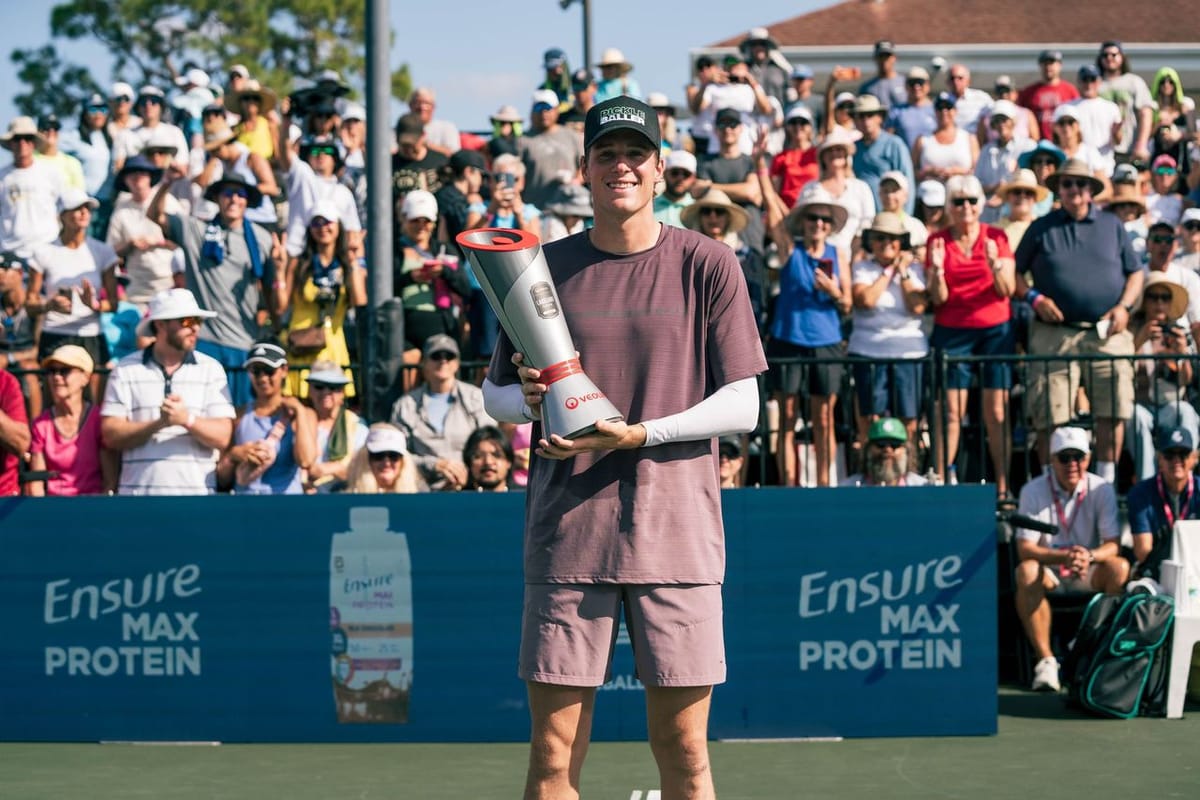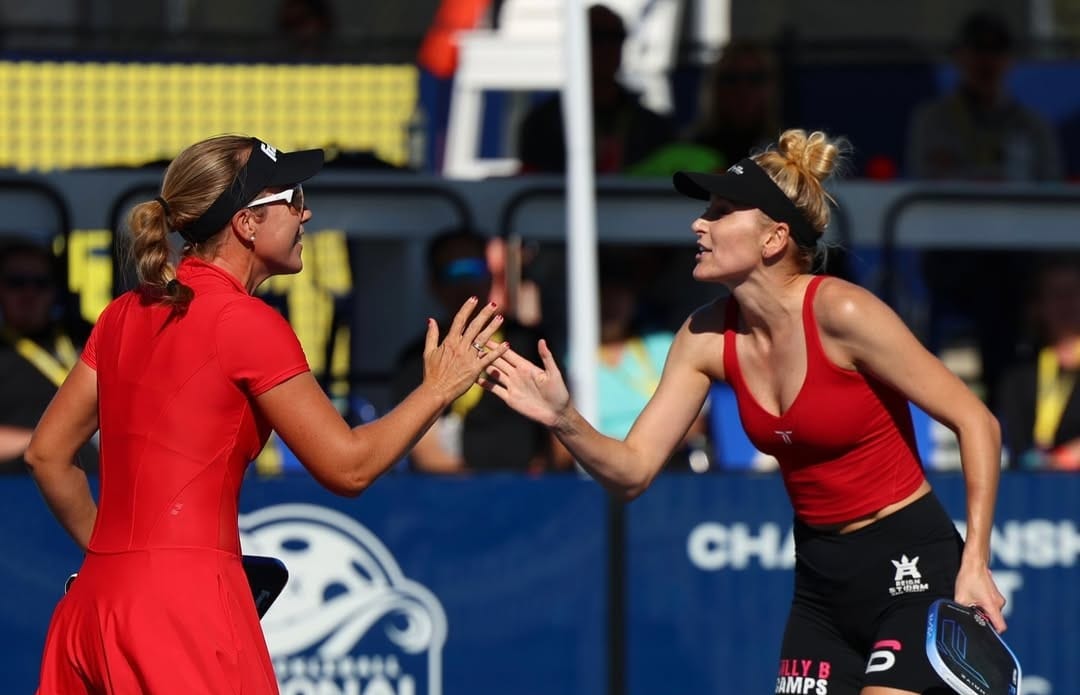Poaching is one of the most controversial subjects to talk about in pickleball. It’s quite volatile actually. You can win games in a hurry and infuriate your partner all in the same game! Amazing! But this subject has to be discussed because poaching is a pickleball technique that is highly effective, yet incredibly infuriating for some. I hope to clear up the confusion about this by explaining to you the ins and outs of poaching.
First, remember that whether or not you use poaching is going to be dependent on your context. We’ll get into more of this later, but whether or not you think poaching is appropriate is totally up to you and your partner. Don’t worry though; I’m going to give you some recommendations on how to approach this. Let’s get started.
What is poaching?
In essence, poaching is when you steal a shot clearly aimed at your partner. For example, let’s say a soft dink is bouncing over the net for my opponent. Instead of leaving it to my partner, I shuffle into his side of the court and hit the ball for him. To do this, I have to get myself and my paddle in front of my partner to hit it. That’s what poaching is.
Let me tell you up front; poaching can make the poached partner very angry. I’ve seen some people leave the venue after being constantly poached. I’m not joking; It can be incredibly annoying and aggravating.
As you can imagine, poaching is a very controversial subject in pickleball. Having said that, poaching is a very effective strategy to use. And therein lies the problem.
The controversy
I’m going to cover how to poach properly later on in this article, but for now, I’d like to go over some reasons to not poach.
Most pickleball players go out to the courts to have fun and get a bit of exercise. They most likely don’t care about winning, and they may not even care about playing well.
However, they do care about playing. They just want to play. If they get poached, then they’re not playing. And if they’re not playing, they’re not having fun. You see where this goes.
This is what makes poaching so annoying for casual pickleball players to deal with. As a general rule, I never poach my partner if any of these points are true:
- They are a beginner.
- They are a casual player.
- I don’t know them.
Pretty simple, I know. But it’s really important. Being poached by someone you don’t know makes you feel useless. The question that pops up is: “Oh, am I not good enough to return that?” That doesn’t feel great.
If you’re an advanced player playing with a beginner, do not poach them. It can be very annoying if they’re not OK with it. It’s also not going to help them learn how to play. Again, poaching is an extremely useful strategy to employ on the courts. But all of this has to be communicated beforehand. And like I said, most casual players don’t care to play on that level.
Likewise, if you’re a beginner, don’t poach an advanced player. It’s equally disrespectful, especially if it’s a respected player in your area. It would be similar to a white belt (complete beginner) in Brazilian Jiu Jitsu trying to instruct or challenge a black belt.
The beginner poaching problem
The big problem with poaching is that its application is not taught properly to beginners. In advanced pickleball play, poaching is used consistently and effectively. However, advanced players know how to poach, and it’s done on purpose. It’s all deliberate and a part of their strategy. More importantly, poaching has been communicated and planned out between the two partners beforehand.
The problem arises when beginners try to do what advanced players do. This means that they try to replicate the poach as well. Unfortunately, they haven’t heard the conversations that those advanced players have had and thus don’t use poaching effectively and make their partners furious in the process.
Improper use
The other problem with poaching in pickleball is that it’s not done properly. Poaching is a selective strategy, not something you do just because you can. That’s the big problem. Beginners will poach their partners just because they can, or they have the urge to do so. This can lead to disaster.
One of the most common mistakes I see is poaching dinks. Unless your partner has a terrible backhand shot, there is no reason to poach dinks. There are a few reasons for this.
If you’re not there in time to poach the dink, you may panic and pop the ball up. This leaves a huge gap where you once were for the opponent to smash towards. Instead, just let your partner get it and stay on your side of the court.
The other reason to not poach dinks is that you don’t get anything out of it. Again, this all assumes that you opponent literally cannot use their backhand shot, which is virtually never going to be the case. Think about risk and reward. Poaching can be risky, do you gain enough reward by poaching a dink? Most likely not.
How to poach effectively
If you’re playing with a consistent partner or in a serious game, then knowing how to poach is essential. I’m going to share with you everything I know about poaching.
The most common setup
The most common poach you see pickleball is the floater. As I said earlier, a floater is a soft shot that pops up into the air right in your smash zone. It’s a mistake made by the opponent and has to be taken advantage. This is why people poach these shots. They’re just too good to pass up!
This is how it typically works. This image assumes both players are right-handed. Also, pretend that you’re the green dot.

This is the most common poaching situation you’ll see.
This poach is a three-step process as you can see in the image.
- You see a floater coming to your partner’s side of the court.
- You side shuffle over to their area.
- You smash the ball with all of your heart and soul.
You’re probably asking yourself, “why should I poach this shot, and not let my partner handle it?”
Reason: backhand.
Scroll back up to the image real quick. Notice how the floater is heading for the partner’s backhand? That’s why you poach this shot instead of letting your partner attempt a backhand smash. Backhand smashes are hard to pull off, they’re inaccurate, and they’re not nearly as powerful. Instead, the player who is on the left can scoot over to use their forehand smash which is far more powerful and accurate.
This is how you use poaching effectively. This strategy is common, but it requires one thing beforehand. Read on.
Stacking can make it easier
Advanced pickleball poaching strategy revolves around stacking. If you don’t know how to stack, don’t worry about this part.
In mixed-doubles pickleball, you will 95% of the time see a right-handed male on the left side of the court. The reason is simple: greater upper body strength equates to more power smashes. Since he’s on the left side of the court, he will be covering not only the forehand smashes up the middle, but also the forehand poaches for his partner.
If you’re stacking, make sure the player with the best smash will be able to take care of the forehand smashes easily.
Communication
If you take anything away from this article, please let it be this:
Poaching is all about pre-match communication. This is essential. If you don’t communicate how poaching is going to work, you’re almost guaranteed to run into issues.
Think about it this way. What’s the most common requirement that you see on job postings? It’s something like, “Must have exceptional communication skills.” You see it all the time. Well, the same thing works in pickleball.
Most of the work that surrounds poaching is done before the game even starts.
My co-host for the Pickleball Kitchen Podcast, Jana, and I play together often. Before every match begins, I look at her and say “I’ve got shots in the middle and floater poaches.” She nods. That’s it. That’s the extent of our communication.
She now knows that if I’m on the left side and a floater (a ball that’s popped up into your smash zone) is coming towards her side, I’m going to scoot over and destroy the ball. Jana now knows two things:
- She can stay relaxed and focused on her game while I take care of floaters.
- She has to get out of the way quickly, or she’s going to block me or worse, get hit by the paddle.
Seriously, I’ve seen people get hurt because someone was trying to smash a shot that came up the middle, but the other player didn’t get out of the way. Another great reason to communicate all of this beforehand.
Please keep in mind, the communication I have with Jana is very simple because we play together all the time. But if you’re working with a new partner, your talks may need to be longer than this.
Only poach when needed
Similar to using spin shots, third shot drives, and lobs, poaching should only be used selectively. Treat it like a tool. You can only bring certain tools out of the bag if you need them. Approach poaching the same way.
Wrapping up
I hope this article has helped you navigate the muddy waters of poaching. If I learn more advanced principles behind poaching, I will update this article. How has your experience been with poaching? Let me know in the comments below!
Anuncie Aqui / Advertise Here
Sua marca para o mundo Pickleball! / Your brand for the Pickleball world!

 English
English  Spanish
Spanish  Portuguese
Portuguese  German
German  Italian
Italian  Japanese
Japanese  French
French  Polish
Polish  Russian
Russian  Netherlands
Netherlands  Hungarian
Hungarian  Turkish
Turkish  Videos
Videos  Pickleball Kitchen
Pickleball Kitchen








 English (US) ·
English (US) ·  Portuguese (BR) ·
Portuguese (BR) ·